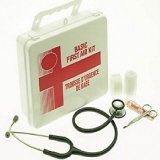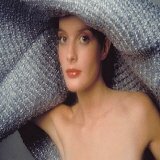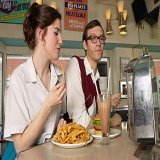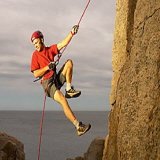|
What is the difference between Film and Digital photography? Which is Best?
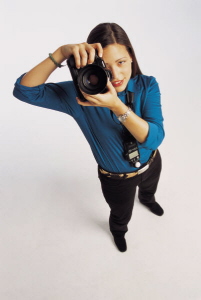
Following is a list of differences that are important to understand. The differences are listed in no particular order.
The sensor: The most obvious difference between film and digital is the sensor used to take the photo. With film cameras a film sensitive to light is placed behind the lens. When a photo is taken the shutter opens for a predetermined period of time and light hits the film. The result is a photo “printed” on the film. To take a new photo the film has to be rolled and a fresh “clean” film is placed behind the lens. 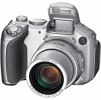
What does a different sensor mean? The main difference is in the Depth of Field. Since sensors are smaller in size than a 35mm film the depth of field will be much higher and in fact in most compact digital cameras almost infinite. The result is that blurred backgrounds can not be created.
The cost of a photo: Photos taken with a DC literally cost nothing. The photos are kept in erasable memory and thus can always be discarded at no cost. Also the photos you would like to keep can be copied to a computer’s hard disk. With storage prices going down the cost of saving a photo on disk is practically zero. Film does cost money. With a film camera you have to pay for the roll of film, for developing the negative and for printing the photo. Every time you press the shutter button you spend money.
The capacity: With ever growing storage capacities digital cameras today can hold hundreds and sometimes thousands of photos on a single media. You can always have a few more in your pocket and changing is very fast. The result is that the camera has practically infinite capacity. You can shoot as many photos as you want and at the end of the day just dump them on your computer’s disk. Film cameras’ capacity is very limited. A roll of 36 photos can only hold 36 photos. After a roll is used changing to a new roll can take time and is not easy to do in scenarios such as darkness or a harsh environment. For that reason many professional journalists carry a few cameras on them and instead of changing rolls they turn and use another camera just so that they do not miss a shooting opportunity.
The feedback: One of the most important features of the digital camera is instant feedback. Almost all of them include a small LCD screen. Once a photo is shot you can go back and watch it on that screen. The ability to see how the photo looks like results in better photos. If the photo is not good you can take another one. Being able to see the photos on the spot results in an educated decision how to fix a photo or how to better compose it. It takes a lot of the guessing away from photography. With film cameras there is no way to know how the photo on the film will look like when printed. 
With digital cameras you can actually take photos without having your eye glued to the viewfinder. Overhead shots where you raise the camera over your head are much easier to do since you can still see what the camera is shooting by just looking up at its LCD screen.
Correcting photos: With digital cameras photos can be corrected using photo editing software. Some correction abilities are built-in to the cameras but many more are available as software packages for your PC. With film cameras what you get is what you get. After the film is developed it is very hard to make any corrections. Usually if corrections are absolutely needed the negative or the printed photo will be scanned (i.e. converted to digital) corrected and then printed again (in a long and costly process). Changing conditions: Every roll of film is designed for best results in a specific environment. For example there are indoor and outdoor films or films with different light sensitivity. If conditions change rapidly a film camera user will have to shoot with the wrong film, change the roll (and usually lose photos that were not used in the current roll) or use another camera with a different film in it. The results of shooting with the wrong film can be distorted colours (reddish photos for example), a grainy photo and more. With digital cameras the characteristics of the sensor can be changed instantly for each photo taken. With a click of a button the camera can be put in an indoor or outdoor mode, low light, night photography etc. Some cameras will automatically sense the scenario and set the sensor mode accordingly. The myth of quality: While it is true that film photography has its advantages the claim for superior quality is no longer true. As digital cameras evolved the quality of high end SLR cameras is superb and in many ways even better than film. When considering quality you should also consider the quality in terms of composition and the scenario caught in the photo. With DC's high capacity, zero photo cost and instant adaptability to changing conditions photographers can produce better compositions and experiment more to get the best photo possible.
Return from Digital Photography to Open-Mind-Publishing Home Page
|





 There are many differences between
There are many differences between 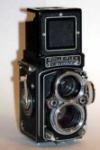 With DC's a fixed electronic sensor (sometimes known as CCD – Charged Coupled Device) is situated behind the lens. The sensor is built from tiny light sensitive sensors each representing a pixel. When the shutter opens light hits the sensor and each pixel gets its “value”. Put together all the pixels comprise one photo. To take a new photo the photo is saved on a memory card and the CCD is electronically emptied.
With DC's a fixed electronic sensor (sometimes known as CCD – Charged Coupled Device) is situated behind the lens. The sensor is built from tiny light sensitive sensors each representing a pixel. When the shutter opens light hits the sensor and each pixel gets its “value”. Put together all the pixels comprise one photo. To take a new photo the photo is saved on a memory card and the CCD is electronically emptied.

